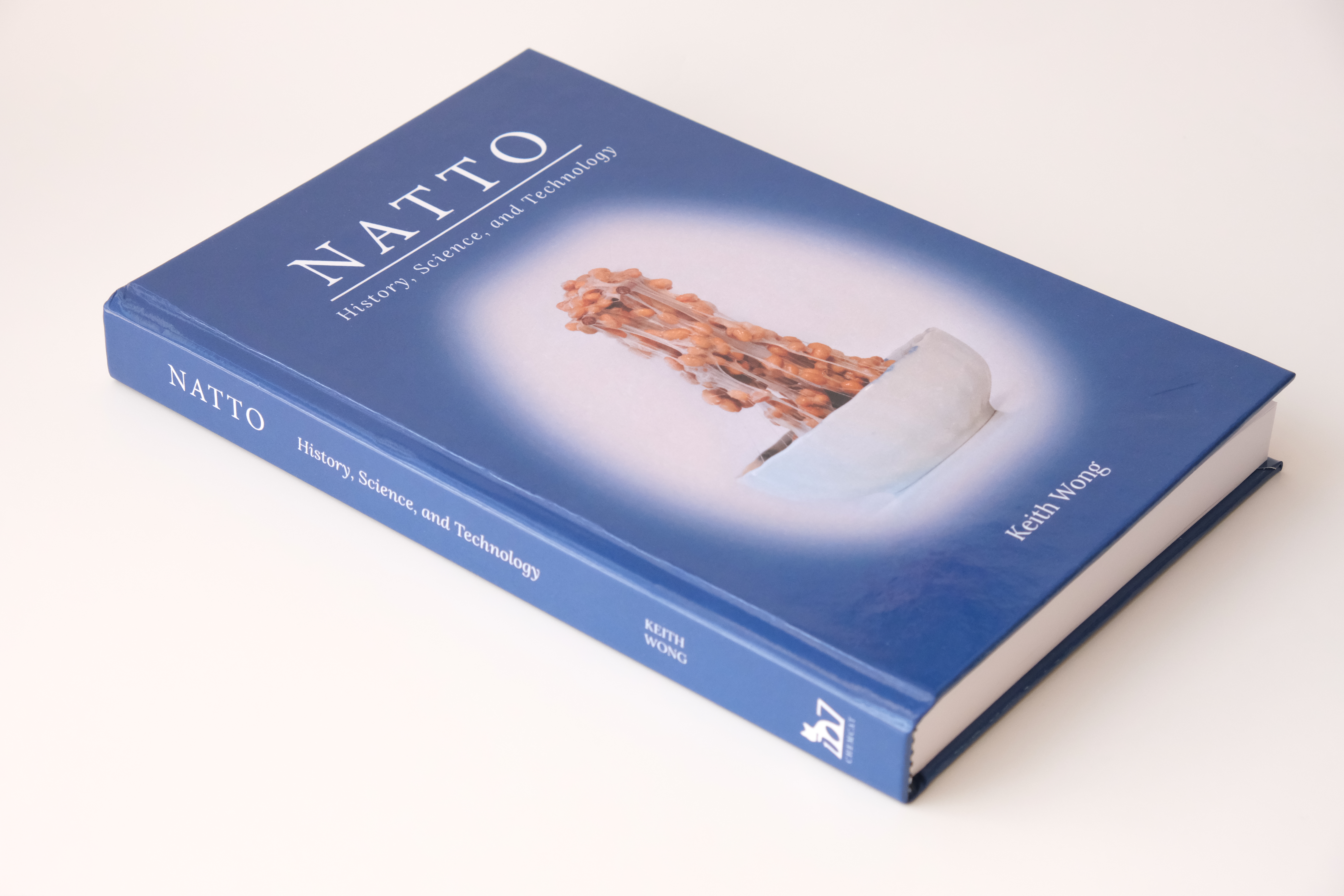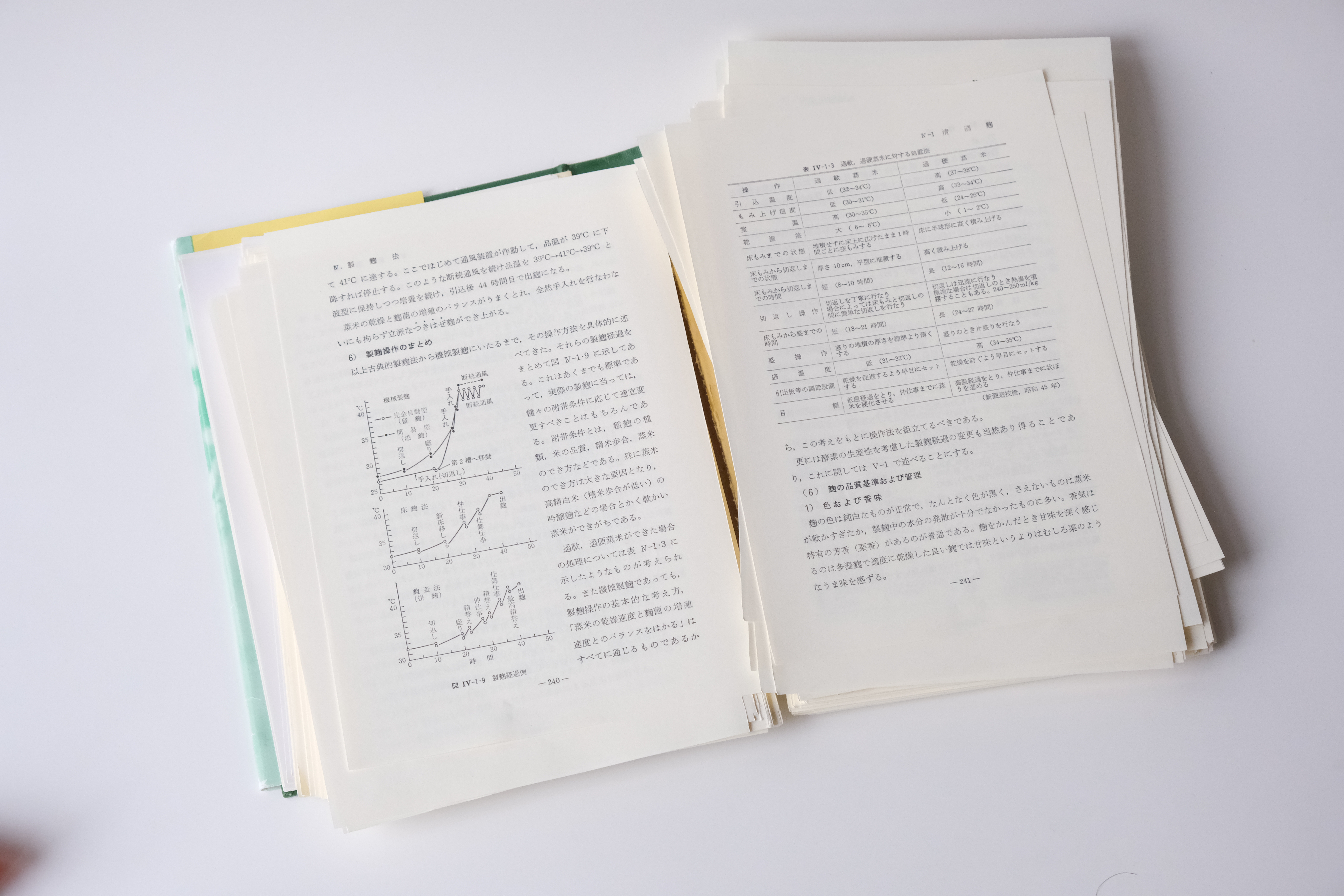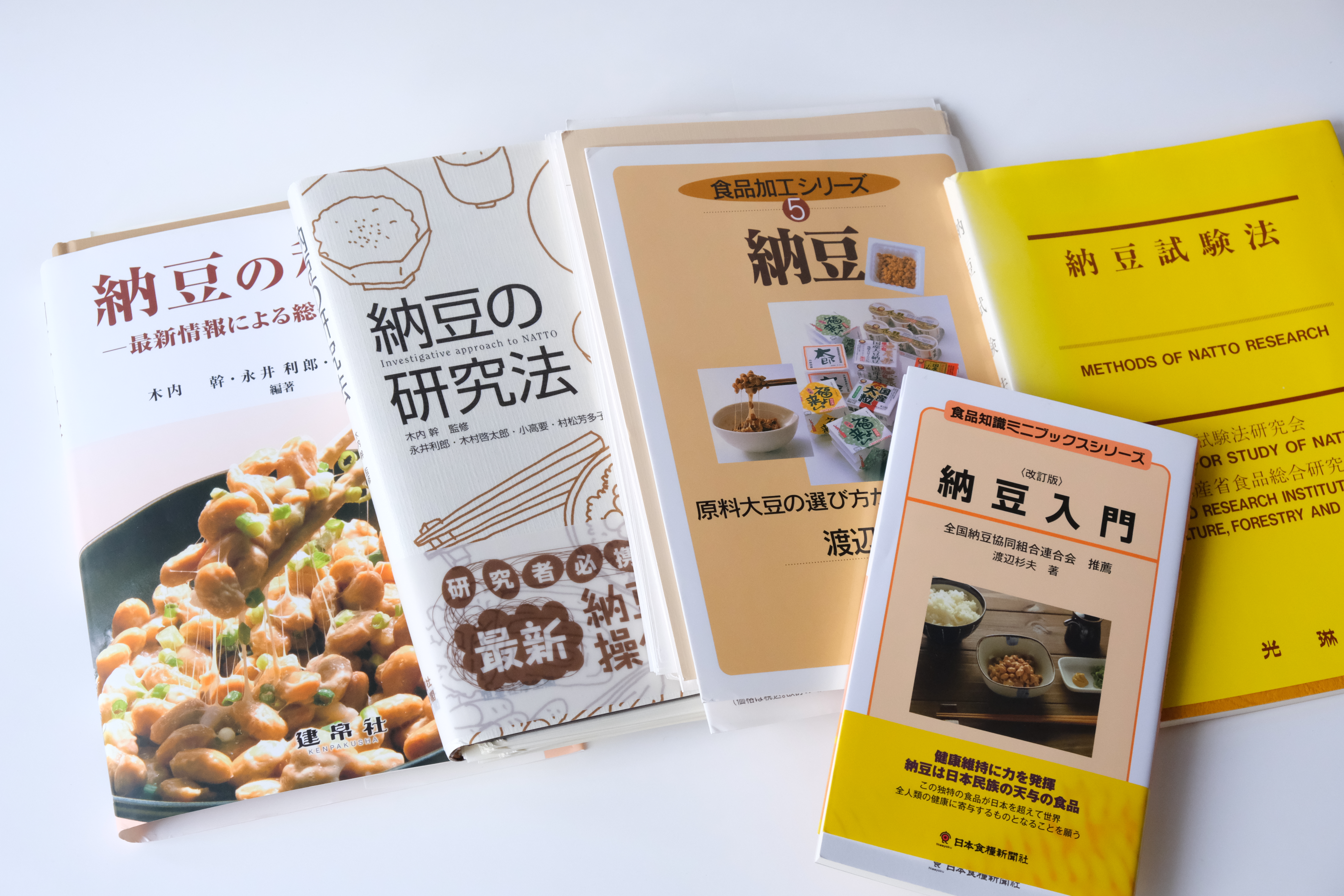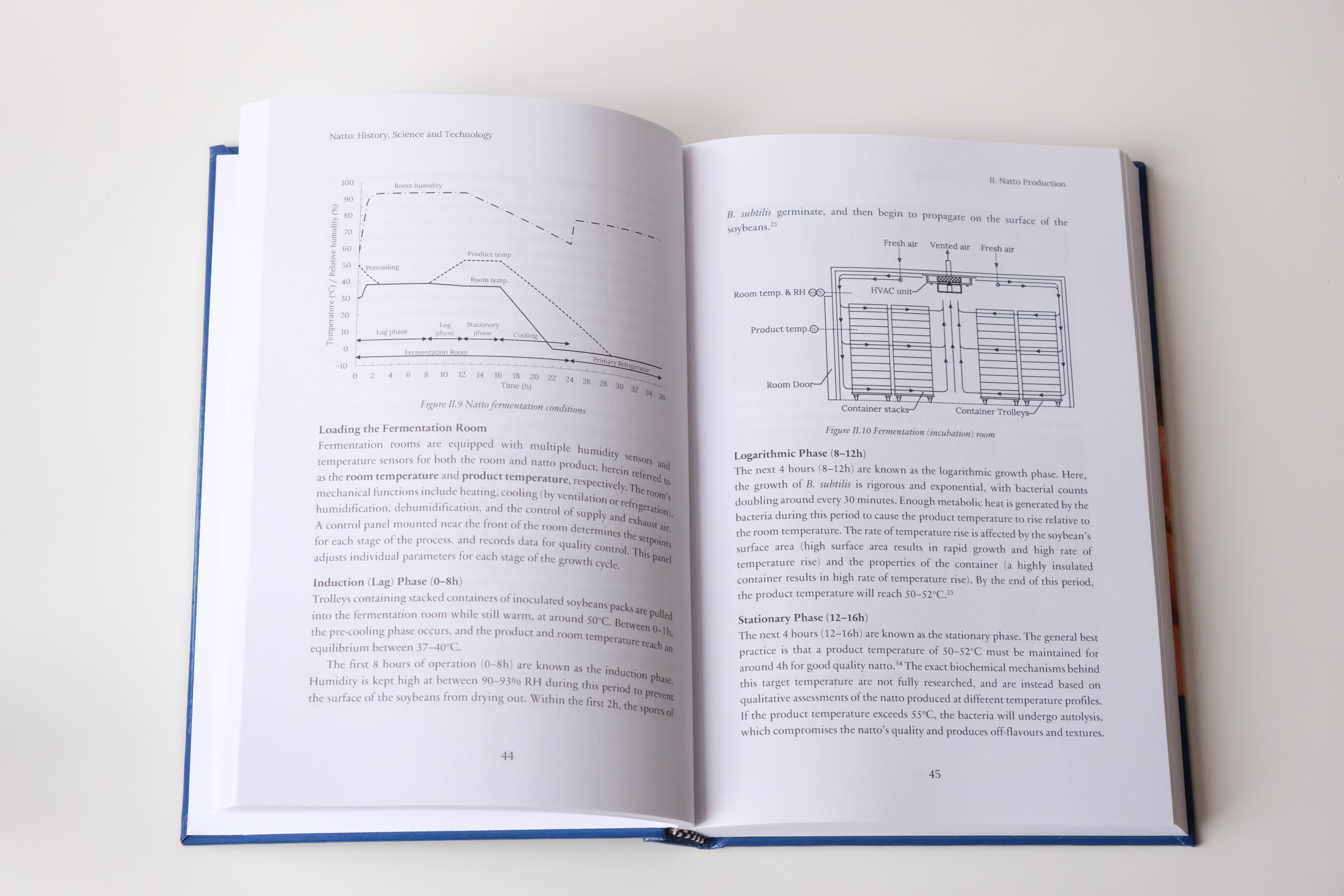It was fun to write. Here are a few thoughts on natto, writing, and academia…
There were no detailed books on Natto
In 2022, if you searched ‘natto book’ on Amazon.com, the first result is a self-help / insomia book: something about a problem getting stickier the more you stir it. I’m sure it’s a great book, but… come on.
Aside from that, there are a few decent home fermentation books with passing mentions about natto. Kristen and Christopher Shockey’s book is great, and so is Sandor Katz’s. Natto chapters also show up in a few textbooks on fermented foods, but none of them have the sort of detail I’m looking for.
What kind of book did I want? Something like this:
I’ve torn apart quite a few of these by now. The one above is Koji Studies, published by the Brewing Society of Japan. Their books are really good: technical, but practical. They have whole chapters on history, industrial processes, biology, and biochemistry. They’re geared toward industry operators and researchers, but I like that a bit better than general audience books.
Translating Japanese Textbooks
There wasn’t a complete technical natto book in English, so I had to write one. Thankfully, there are some good Japanese natto books, so I bought them all, and transcribed and translated them:
This was easy enough. After scanning all those Brewing Society of Japan books, natto books were a breeze. Combined with a giant literature review on natto and Bacillus subtilis, I had enough to write an English-language book on natto. I tried to write with a decent mix of technical info, without getting impractical. Here’s a preview:
Here are a few fascinating things I learned about natto, and a few thoughts.
Things I learned
I thought natto and Bacillus subtilis would be boring
After all, it’s just bacteria on beans, right? Fungi like seem way more interesting, with all the hyphae, fruiting bodies, and specialized methods of reproduction. I was wrong, and I’m now convinced that every single organism on Earth is interesting.
B. subtilis can: form hardy endospores (gram-negatives like E. coli can’t do this) that survive boiling water, swim, swarm, form multicellular communities with aerial ‘wrinkles’, exchange DNA, commit fratricide, produce a detergent-like substance that breaks the surface tension of water… and many, many others.
It’s crazy how complicated something as innocuous as bacteria can be.
There are a LOT of natto types out there
Different sized beans, red soybeans, black soybeans, green soybeans, cracked soybeans, different sauces, you name it. There’s a huge diversity in natto products in Japan, kind of like our yogurt and cheese sections in the West.
There are also different strains of Bacillus subtilis used for natto, which give properties like low-odour and low-stickiness natto. These were two of the more interesting sections I wrote about, and they’re the most promising for natto first-timers.
Aside from that, I hope people try making natto with species other than B. subtilis, or mixed cultures of different bacteria. I think there’s a lot of potential for whole soybean foods and ferments in the future.
Thoughts on Academia
Low Quality Papers
Without naming specifics, I came across some journals with really questionable content. For some papers, it seemed like the writers weren’t even trying when it came to things like fact-checking or putting together decent diagrams (MS Paint, anyone?).
It does feel like academia in the last decade has partially become a mill to churn out papers. Someone should do a tier list of academic journals. Respect to those watching out for, and speaking up about academic integrity.
Medical Studies
Reading medical studies is a headache. There are so many issues to watch out for, like conflicts of interest, trials that are too short, photoshopped results (shoutout to Elisabeth Bik), playing with statistics, etc. And then there are the media outlets making bold claims and headlines over inconclusive studies.
As someone not in the medical field, these papers can get really hard to read. I was definitely in over my head when following a decades-long academic rabbit hole on what all the Vitamin K-dependent proteins actually do. Short answer: we’re still not sure.
Second Edition and Other Topics
Nevertheless, I enjoyed self-publishing: it allowed me to learn about things like cover design, graphic design, formatting, front matter, ISBNs, and publishing in general. It was fun to write, draw diagrams, and do photoshoots.
My only regret is that self-published books in Canada no longer get a Cataloguing in Publication (CIP) data block, something I wanted which would make it easier to get my book into a library. I’ll probably try to write and publish a Second Edition through a traditional publisher, and add more product photos and some microscopy shots.
If I write again, I think my next book would be much faster, now that I (sort of) know what I’m doing. Some other topics I’d like to write about are:
- Koji - but there are a ton of decent koji books now, and good websites (Check out Koji Wiki!)
- Space Food - this might have to start as a series of blog posts, first. I also like the idea of minimalist food, dystopian food, food ideas for the future, etc.
Where to buy
You’ll be able to buy my book, Natto: History, Science and Technology, in hardcover or paperback on Amazon or Barnes & Noble by searching the title.
E-book will follow later this winter.
 Keith Wong
Keith Wong 


